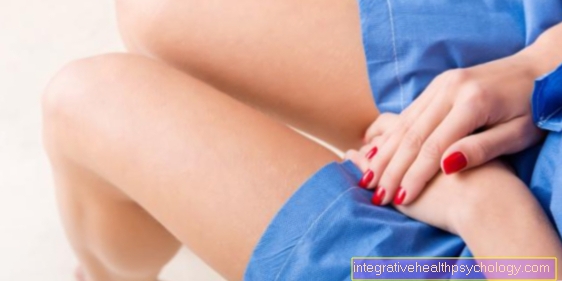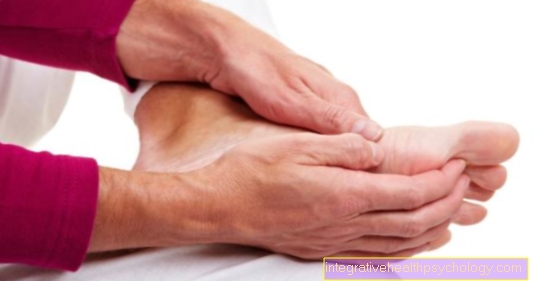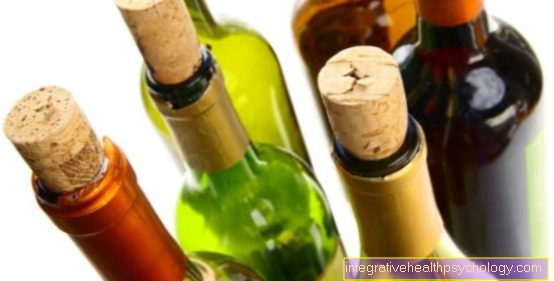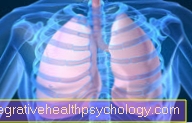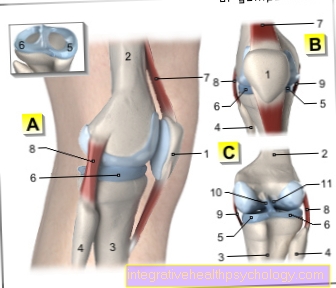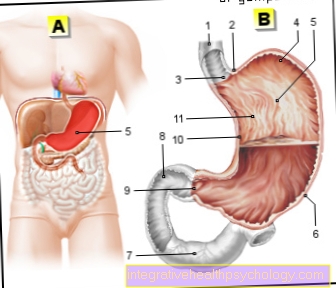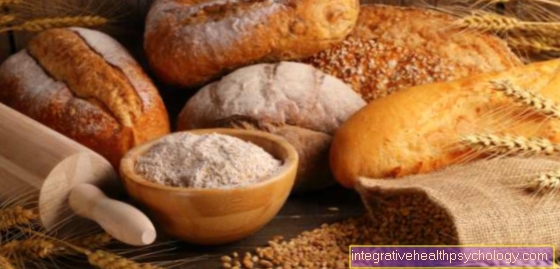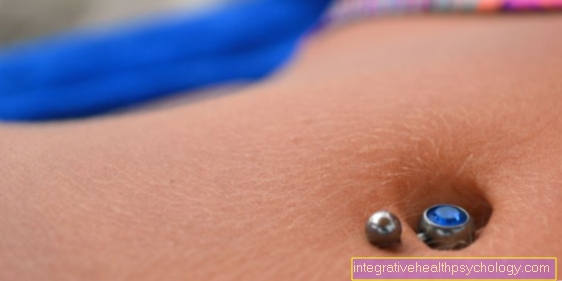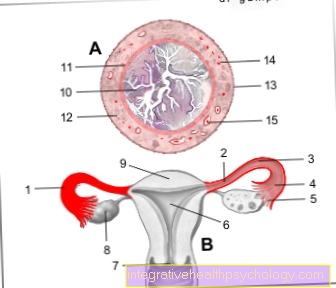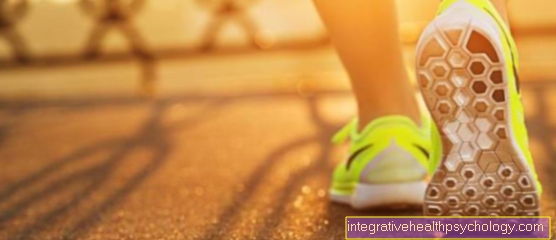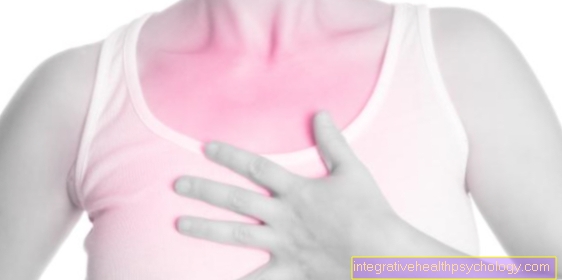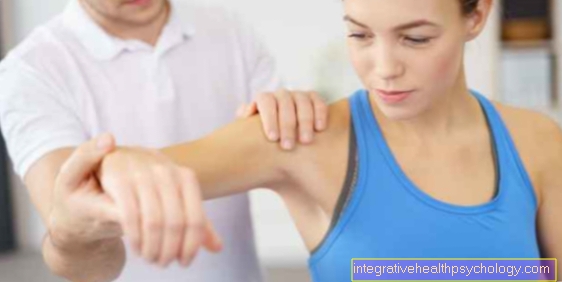Oily Skin - What To Do?
If there is oily skin, the question arises: what to do?
Synonyms in a broader sense
oily skin, seborrhea
Medical: seborrhea
English: oily skin
Cleansing the skin

Therapy for oily skin consists primarily of adequate cleaning and care. Contrary to popular belief, it is a fatal mistake to dry out the skin. The skin should never be completely degreased (which can easily happen, for example, if you wash too often) so that its protective water-lipid layer (protective acid layer) is not destroyed.
Also read: The Right Skin Care For Men
In addition, completely defatted skin tends to react to this loss with an overproduction of sebum in order to replenish the lost fats. It is better to try to specifically control the sebum production through certain selected care products, to refine the skin structure and, as far as possible, to counteract skin impurities.
It is particularly important to keep the skin generally clean. Care should be taken to clean the skin primarily of excess oil on the surface of the skin, but also of care product residues or sweat. The basic cleaning agent should always be water, which should not be too hot, but preferably lukewarm, as water that is too warm stimulates the production of sebum.
Various soaps or syndets (stands for synthetic detergents, i.e. active washing substances) can then be used with the water. Most suitable are non-lipid-replenishing cleaning agents that are adjusted to the pH value of the skin surface and at the same time remove excess fat. So it's best to use a slightly acidic cleaning agent (with a low pH of around 5.5) and thus supports the skin's natural protective acid mantle. Then you should always rinse with cold water.
Such cleaning should be done at least once, ideally twice a day. In addition, a more intensive cleansing with a peeling can be done about once a week, which opens the pores and counteracts the formation of blackheads. A facial toner should also be used daily.
However, the following should be observed when using such products. It makes sense to apply a facial tonic with cotton pads and not to use your bare hand. This reduces the germ load on the skin as well as possible. This prevents pimples and blackheads from forming. It should also be noted that the skin is often irritated after a facial treatment and should be treated gently. This is especially important if you practice facial care every day. For example, you shouldn't rub your face dry with a towel after peeling, but dab it gently.
Facial steam baths, especially when enriched with chamomile, also have a positive effect on the complexion.
You might also be interested in the topic: Clogged sebum - what to do?
Home remedies for oily skin
In the fight against oily skin, there are several home remedies available to those affected that can effectively improve the complexion.
A classic example is the chamomile bath. To do this, fill a bathtub with lukewarm water and add some chamomile flowers. Bathing twice a week for 20 minutes each can achieve visible and tangible results. Alternatively, you can treat yourself to an improvised steam treatment with chamomile at home. To do this, bring a liter of water to a boil in a saucepan and then add two to three tea bags. If you now place the pot on a table, you can comfortably lean over the pot so that the steam reaches your face. The treatment becomes more effective if you also hang a towel over your head so that the chamomile steam cannot pass your face. Five minutes a day with this home remedy should be enough to combat oily skin.
Another popular home remedy is apple cider vinegar. For self-treatment, a tablespoon full is mixed with one liter of mineral water. The solution can then be applied to the skin of the face using a cotton pad. Then you should be careful not to rub your face with a towel, but rather dab it with tissue or soft toilet paper. In this way, not only can oily skin be cleaned, but the formation of annoying pimples and blackheads can also be counteracted.
Find out more about the topic here: Blackheads - Causes and Treatment
Another common home remedy is face masks. A simple and at the same time very effective variant is a mask made from yogurt, grated apple and honey. It should be noted that it is a sour apple. After application, the acid combats oily skin, while the yoghurt and honey also smooth and nourish the skin. With regular use, this home remedy leads to a healthy looking complexion in the long term.
Diet for oily skin
Acne and oily skin are not just caused by hormones. Also one wrong diet can The cause of a blemished skin be.
In order to avoid oily skin, particular attention should be paid to diet Consume as little sugar as possible. This is necessary because the growth-promoting effects of sugar on human skin cells favors the oily skin. Food with one high glycemic index should be avoided, including some Dairy products but also food with high carbohydrate content. Grain products such as pasta or white bread, but also certain types of vegetables such as potatoes, contain a lot of carbohydrates. In addition, the consumption of foods should be restricted contain a lot of arachidonic acid, as these too can lead to oily skin. Examples of a Foods high in arachidonic acid are Tuna, lard, Pork liver, Liver sausage and egg yolk.
In addition to a diet low in carbohydrates and arachidonic acid, the The fat content of the food should be respected. Especially fried food such as French fries or other fast food are counterproductive for oily skin. This also applies to sweet baked goods that contain a lot of butter or margarine in addition to sugar.
With all these restrictions, the question arises, what should I still eat if I have oily skin?
Should be an important staple ingredient fruit and vegetables be as not only fill you up and low in fats and carbohydrates are but additionally Contain vitamins, which are essential for a healthy life. Also low-fat meat and fish shouldn't be missing from the menu. A substitute for cow's milk through soy milk can also help. As a drink is next to mineral water unsweetened tea to recommend.
In addition, it is not only important what you eat, but also when. One should look at fixed meal times get used to and Avoid nibbles in between. This gives the body time to digest and keep blood sugar levels as low as possible.
One last important step towards healthy skin is that Quit smoking. Cigarettes not only lead to oily skin, but also cause lasting damage to almost all internal organs and are common causes of cancer.
Cream against oily skin
As principle applies to choosing the right cream: low fat content. With greasy creams, there is a risk of making the already oily skin look even oily. In addition, the right cream should have one have a good UV filter and the Moisturize the skin. Soothing, antibacterial care without alcohol is best.
The right cream should definitely go through Facial toner and maybe peeling can be added.
More tips on what to do with oily skin
With a pronounced form of oily skin and acne, it can make sense to use antibiotics or the active ingredient benzoyl peroxide, which inhibits cell growth in the sebum glands, treats the cornification disorder and also works against bacteria. There is also the option of estrogen therapy for women with severe acne. Sometimes UV radiation can also be helpful.
If the oily skin is primarily caused by stress, it often improves through targeted relaxation techniques such as autogenic training or progressive muscle relaxation. If the oily skin was caused by another disease, it is of course important to first devote yourself to the targeted treatment of the underlying disease.
Powder and make-up (make sure to use them sparingly, otherwise pores can be clogged up) do not remove the cause of the oily skin, but they make it look less shiny and oily.
It should also be avoided in any case to express blackheads, even if those affected often feel tempted to do so. This is because there is a risk of pushing some of the accumulated bacteria even deeper into the skin, which in the worst case scenario can lead to extensive abscesses (collections of pus).





